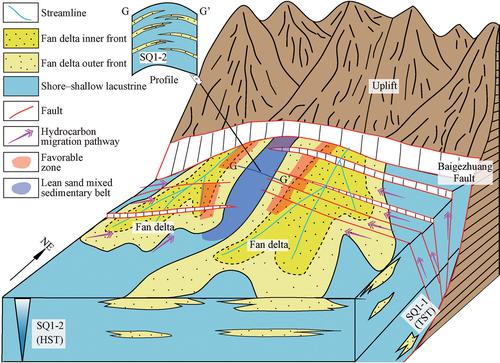当前位置:
X-MOL 学术
›
Acta Geol. Sinica Engl. Ed.
›
论文详情
Our official English website, www.x-mol.net, welcomes your feedback! (Note: you will need to create a separate account there.)
Distribution of Mid-deeply Buried Sand-bodies and their Hydrocarbon Significance at Basin Margins: Case Study of the Paleogene in the Eastern Liuzan Area of the Nanpu Sag, Bohai Bay Basin, China
Acta Geologica Sinica-English Edition ( IF 3.3 ) Pub Date : 2021-06-21 , DOI: 10.1111/1755-6724.14782 Lijie CUI 1, 2 , Shikai JIAN 1 , Boming ZHANG 3 , Xiongju XIE 2 , Liang LI 3
Acta Geologica Sinica-English Edition ( IF 3.3 ) Pub Date : 2021-06-21 , DOI: 10.1111/1755-6724.14782 Lijie CUI 1, 2 , Shikai JIAN 1 , Boming ZHANG 3 , Xiongju XIE 2 , Liang LI 3
Affiliation

|
The current research aims to unlock the temporal and spatial distribution of sand-bodies and their relationship with hydrocarbon accumulation in the mid-deep layer of basin margins, located in the eastern part of the Liuzan area of the Nanpu Sag, Bohai Bay Basin, China. Through this study, the main target interval of the area was divided into two fourth-order sequences. The lean sand mixed sedimentary belt with great importance in controlling hydrocarbon accumulation was identified through the comprehensive use of 3D seismic data, logging data, lithological data and seismic inversion data. A detailed analysis of sand-body development characteristics and their role in controlling hydrocarbon accumulation was conducted. The results reveal that the study area mainly develops two distinct fan-delta lobes from the NE-trending sediment supply direction. Due to the relatively high influence of the lacustrine transgression event, the scale of the lean sand mixed sedimentary belt within the SQ1-1 (the lacustrine transgressive systems tract) is relatively small, showing a relatively continuous distribution of sand bodies in the plane. Conversely, due to the relatively high impact of the lacustrine regression event, the scale of the lean sand mixed sedimentary belt developed within the SQ1-2 (the highstand systems tract) is relatively large, the two east sets of fan-delta sedimentary systems being clearly separated. The lean sand mixed sedimentary belt formed a good lateral occlusion belt in favor of hydrocarbon accumulation. Through composite analysis of structural interpretation results, sand-body distribution and well test data, it is evident that the lean sand mixed sedimentary belt located in the structural high is not a favorable zone for hydrocarbon accumulation. In contrast, the wing of the high part of the structure is the zone of sand-bearing bodies and is a favorable zone of hydrocarbon accumulation.
更新日期:2021-08-29



























 京公网安备 11010802027423号
京公网安备 11010802027423号